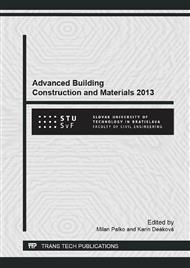p.31
p.35
p.39
p.43
p.47
p.52
p.57
p.62
p.67
Development of a Mathematical Model for the Three-Dimensional Accounting of Economic Feasibility of Energy-Efficient Buildings
Abstract:
The most refurbishments in these days are often focussed only on the energetical part of the project. But you should consider just as well the economic situation of the investor. This even more, if the renovator is a public authority, like the community for the refurbishment for school-buildings. The study developed a mathematical model for the three-dimensional accounting of economic feasibility of methods for energetical refurbishments via life-cycle-costs. The optimal solution will be to find the best combination of listed refurbishment measures to reduce the total life-cycle-cost, in the ideal case even down to zero.
Info:
Periodical:
Pages:
47-51
Citation:
Online since:
December 2013
Authors:
Price:
Сopyright:
© 2014 Trans Tech Publications Ltd. All Rights Reserved
Share:
Citation:


